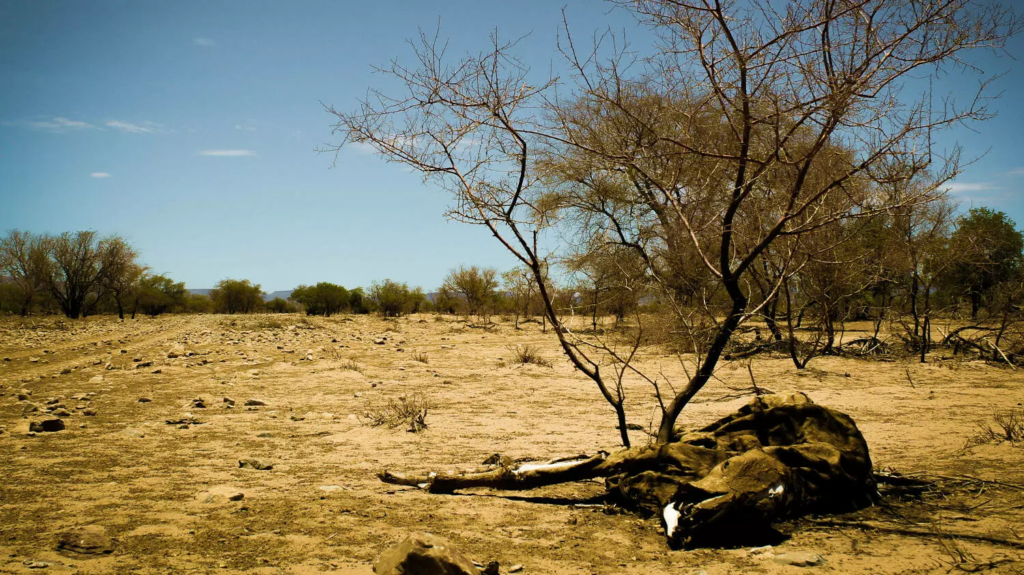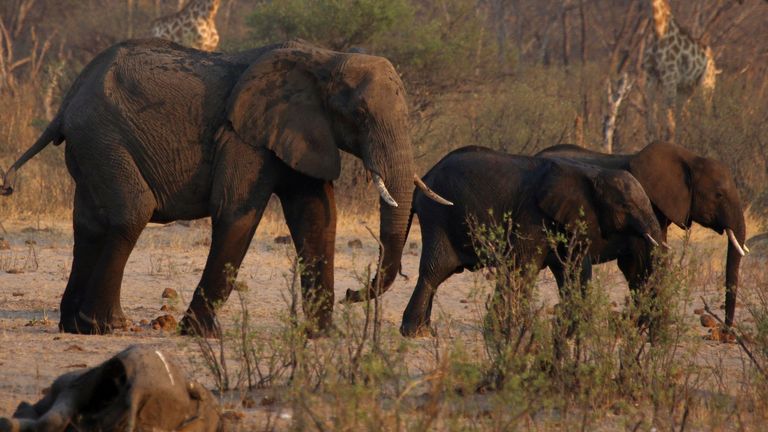A Drastic Measure Amid Severe Drought
Namibia, a Southern African nation, is facing an unprecedented food crisis due to the worst drought in a century. In response, the government has announced a controversial plan to butcher 723 wild animals, including 83 elephants, to provide food for nearly half of its population, which is now at risk of acute food insecurity.
The Scale of the Crisis- Namibia

The drought has left 1.4 million Namibians in a dire situation, struggling with hunger and the threat of starvation. According to the United Nations, 84% of Namibia’s food resources are already exhausted. The severe shortage of food has pushed the government to take drastic measures, which include culling wild animals to feed the population and mitigate human-wildlife conflicts that have become more frequent as both humans and animals compete for scarce resources.
The Animals Targeted for Culling

The Namibian government’s plan involves the culling of various species, including:
- 300 zebras
- 30 hippos
- 50 impalas
- 60 buffaloes
- 100 blue wildebeest
- 100 elands (a type of antelope)
- 83 elephants
These animals have been selected for culling to not only provide much-needed food but also to reduce the number of potentially dangerous encounters between wildlife and humans. The situation is particularly concerning with elephants, which, despite being herbivores, have the potential to cause fatalities. In neighboring Zimbabwe, elephants were responsible for the deaths of at least 50 people last year.
Government’s Justification and International Perspective
Namibia’s Ministry of Environment, Forestry, and Tourism has defended the plan, stating that it aligns with the country’s constitutional mandate to utilize natural resources for the benefit of its citizens. The government argues that this strategy is “necessary” given the current crisis and is not uncommon in regions where wild animal populations can be sustainably managed.
Rose Mwebaza, Director of the United Nations Environment Programme’s Africa Office, supported the notion of sustainable harvesting, saying, “Well-managed, sustainable harvesting of healthy wild animal populations can be a precious source of food for communities.”
The Broader Impact of the Drought
The current drought is not only affecting Namibia but has also impacted a significant portion of Southern Africa. The U.N. World Food Program reported in June that over 30 million people in the region are affected by the drought. Droughts have been a recurring issue in Southern Africa, with several occurring in the past decade, including from 2018 to 2021. However, this particular drought is especially severe and wide-reaching.
Juliane Zeidler, Country Director of the World Wildlife Fund in Namibia, highlighted the dire situation, stating, “There is no food. There is no food for people and there is no food for animals.”
Conclusion
As Namibia moves forward with its plan to cull 723 wild animals, the country faces a complex moral and ecological dilemma. While the culling aims to provide immediate relief to a starving population and reduce human-wildlife conflicts, it also raises concerns about the long-term impact on Namibia’s wildlife and natural heritage. The world watches closely as Namibia navigates this crisis, balancing the urgent needs of its people with the preservation of its wildlife.








